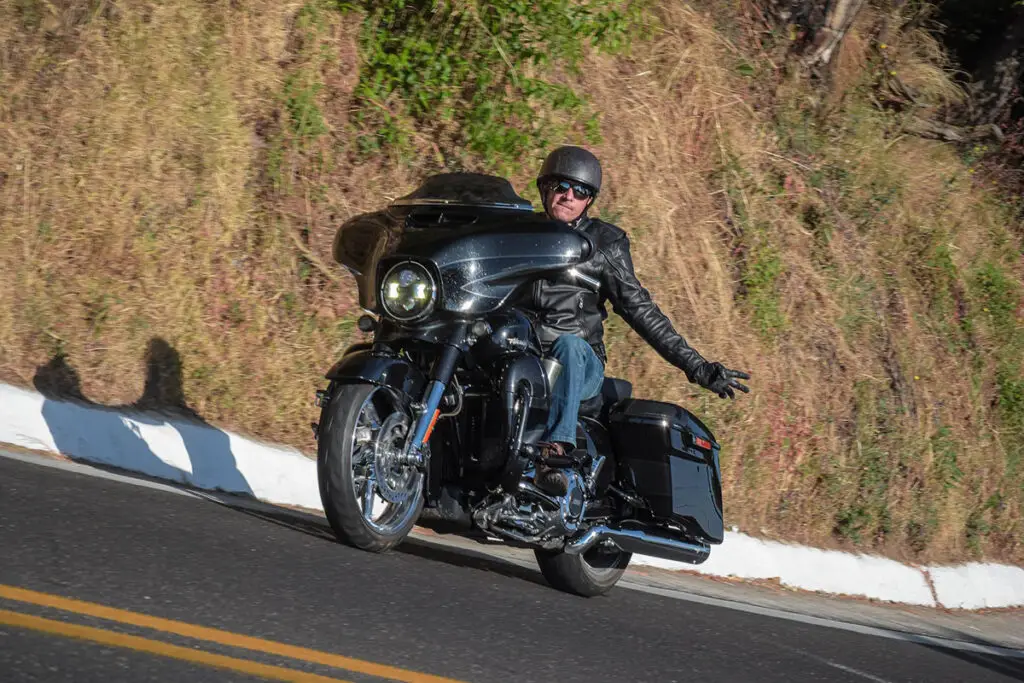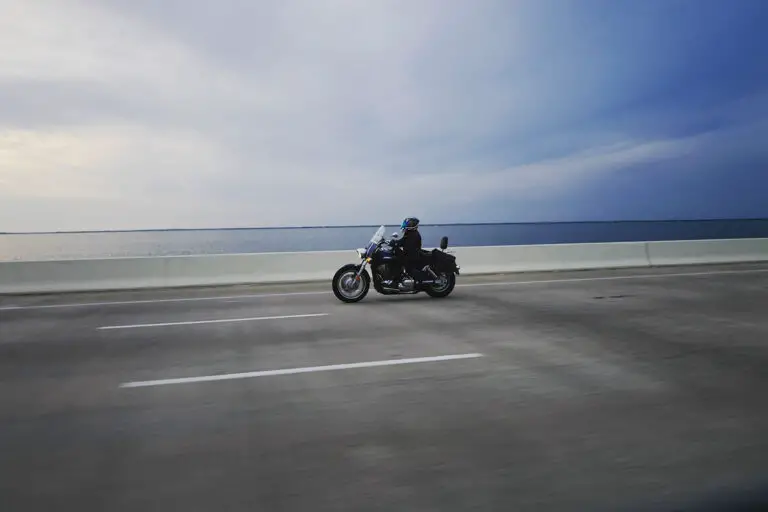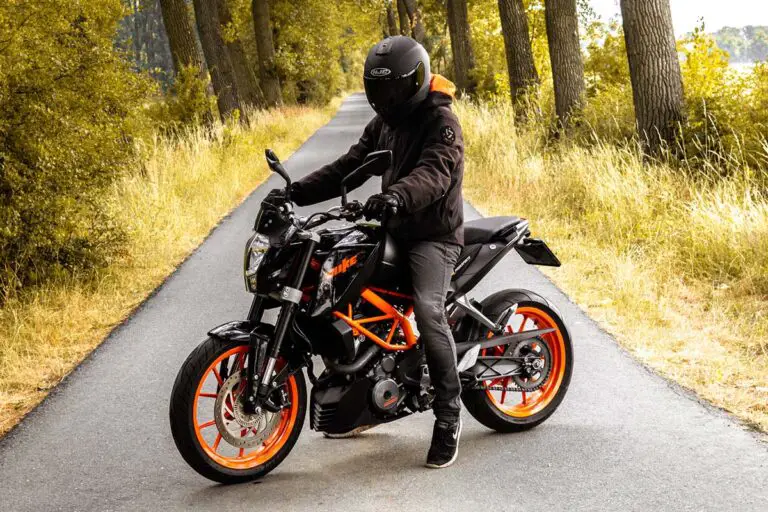The Motorcycle Wave: Meaning & How-to Guide
Disclosure: We may get commissions for purchases made through links in this post.
Riding subcultures fascinate me, as they are always teeming with urban lore, jargon, and insider signals. One such subculture is the motorcycling community and its motorcycle wave — a seemingly bygone gesture highly respected and like an open secret for knowing motorheads.
The moto wave is an inclusive biker gesture that transcends rider skill, age, and brand loyalty. It can be done in several ways — by nodding, straightening out your arm, angling your forearm, making a pseudo-turning signal, flashing a duce, or doing a 2-finger motorcycle wave.
The motorcycle wave is a gesture of politeness experienced riders can easily identify — provided it is executed correctly and does not endanger you or your passengers. And in this guide, we will discuss the proper way to do it and its many versions.
So whether it’s the nod or the 2-finger wave that interests you, stay tuned and learn more about the history and significance of this custom.

What Is the Motorcycle Wave?
If you are new to the motorcycling community, know that this is not a viral social media trend nor the newest dance craze. The motorcycle wave (or moto wave) is a gesture that involves a quick wave or head nod and is shared among motorheads in a group or between passing riders.
This simple gesture is a means for gearheads to acknowledge and show mutual respect for one another while on city streets or the freeway (regardless of the make, model, and class of their thumper). It is a sign of camaraderie and solidarity among motorcyclists and part of the biker tradition.
History of the Motorcycle Wave
Although the origin of the moto wave is a bit obscure, it is believed to trace back to the early days of motorcycling. In the early 1900s, motorcycles were still relatively foreign to the common folk. Hence, those who rode these two-wheeled machines were often perceived as outlaws or rebels.
This ‘alienation’ reportedly led to motorcyclists forming a tight-knit community and coming up with subculture signals to signify camaraderie and acknowledge their own kind.
WWII Veterans and Harley-Davidson
Axle Addict and some riders speculate that the motorcycle wave originated from the Harley-Davidson co-founders, who customarily waved at each other while riding. Meanwhile, others claim the gesture started as a sign of respect for post-war veterans often seen riding motorcycles.
Honda Ads of the Mid-20th Century
One of the more popular theories of bikers regarding the origin of the moto or bike wave has to do with Honda’s advertising campaign, “You meet the nicest people.” These ads were geared toward creating a new image for motorcycles and motorheads, which were sadly associated with delinquents at the time.
In the series of ads launched by the Japanese OEM, well-groomed riders clad in matching jackets were shown riding as a group and exchanging waves. Soon after, public opinion on the motorcycling subculture eased, and new bike owners emulated the behaviors portrayed in the ads.
This shift in perception contributed immensely not only to the success of the campaign but also to the motorcycle wave’s role in biker culture.
Hippies of the ’70s
Another possibility is that the motorcycle wave is a variant of the ‘peace sign’ popular among hippies. This makes a lot of sense since hippies were drawn to motorcycles as a means of living life on their own terms and exploring the open road.
Additionally, riders from hippie communes loved gathering in places and exchanging friendly waves with passing riders — whether or not they belonged to the counterculture movement.
On-Road Necessity
But the most logical origin of this gesture is from the early 1900s when motorbikes were not yet equipped with turn signals and brake lights. The absence of these features meant riders relied on specific hand signals to let other road users know if they were stopping or turning.
Eventually, electronic lighting assemblies became standard in modern two-wheelers, reducing hand signals to the greeting-oriented moto wave we know today.
(This isn’t to say that hand signals are no longer important. Knowing these signals is still vital not only for group runs and camaraderie among bikers but also for staying visible — in case your main lights break down or get damaged.)
Why Is It Important?
- Sign of camaraderie: The moto or biker wave is a gesture of mutual respect and friendship between riders — a way of recognizing fellow motorheads who share the same passion for riding and motorcycles.
- A sense of community: It fosters a sense of community among riders that transcends brand loyalties and other differences.
- Upholding biker tradition: Apart from being a sign of camaraderie and solidarity, the motorcycle wave is integral to the biker culture. Outside of tricky situations, it is almost rude not to give a motorcycle wave back to a fellow rider.
- Overcoming stereotypes: As once proven by Honda’s advertisement campaigns, the motorcycle wave can help change negative stereotypes linked to motorcyclists, as the gesture presents a positive image of bikers and their community.
- Enhanced safety: Doing the motorcycle wave helps improve on-road safety and promotes awareness and alertness among riders. It lets riders know that others are aware of their presence, reducing the chances of unforeseen accidents.
- Positive mental health: Especially for solo riders, motorcycling can be an isolating and lonesome activity. But with the motorcycle wave, bikers are reminded that they are not alone on the road.
- More enjoyable riding experience: This simple gesture adds to the ‘fun’ factor of riding motorcycles. It is guaranteed to bring anyone to smile and appreciate motorcycle riding more.
How to Perform the Motorcycle Wave
Ask motorheads to describe how to do a biker wave, and most would probably say its execution is quite simple. But contrary to this belief, this hand gesture is not as straightforward as we hoped it would be.
According to Motosport, there is “a style and method to the motorcycle wave process.” And you’re just about to find out what they are.
Understand that there is no single method to doing the motorcycle wave — there are several ways to do the hand signal. Different riders have their own variations. But for your reference, below are the most common techniques for doing the motorcycle gesture the right way:
Low Wave
Considered the simplest form of the motorcycle wave, it involves raising your left hand off the handlebar and waving it towards the street with one, two, three, or five fingers extended.
This type of wave is typically used by cafe racer or cruiser-style motorcycle owners. However, a low wave with certain variations, such as an angle greater than 45°, a palm facing up or back, or the use of four fingers, would be a dead giveaway that you are either a newbie or inadequately skilled.
High Wave
This variation of the low wave involves waving above your head while angling your forearm slightly forward. Your elbow should be kept at shoulder height (or slightly lower) and bent at a 75° to 85° angle. The palm should face the oncoming rider, and it’s recommended to keep the hand in a relaxed state while using a side-to-side motion.
This wave is typically reserved for riders you are familiar with or those in your riding group. It is equally important to execute it only when your left hand is free from the handlebars and coming from your hip or thigh.
Straight Out
Generally, it is widely used among different types of motorcycle riders, ranging from those who ride crotch rockets to custom-built bikes. When doing this gesture, you can extend your arm partially or fully.
What’s important is that it does not deviate more than 10° above or below the shoulder level. Also, your palm should be fully displayed and facing the oncoming rider — either horizontally or vertically.
2 Finger Motorcycle Wave
This bike wave is a common way to greet fellow riders when passing in the opposite direction. It involves lifting your left hand off the handlebar and using your index and middle fingers to wave.
According to BikeBandit, the two fingers pointing down (or at an angle) in this wave symbolize the importance of keeping your bike’s two wheels on the ground for safety.
Head Nod
In left-side driving countries like Australia, using your right hand for the motorcycle wave requires you to release the throttle. Hence, some riders choose to nod as an alternative.
Nodding is a more understated form of acknowledgment and is favored by those who are either more introverted or need both hands to control their bike.
Peace or “V” Sign
It is a well-known gesture formed by extending the index and middle fingers to make a “V” shape. When done as a biker wave, it must be angled at 45° with the left hand pointed toward the road.
This version is common among Harley riders but may not always be reciprocated. Ultimately, it is up to you to initiate the wave or wait for passing riders to make the first move.
Other variations include:
- Using a single index finger.
- Extending three or four fingers.
- Tucking the thumb in slightly — all executed with a quick flick of the wrist.
Faux Left or Right Turn
To indicate a planned left turn to traffic behind you, the lawful method is to extend your left arm straight out. However, the Faux Left Turn motorcycle wave is a different gesture to acknowledge other riders.
This wave involves extending your left arm with your hand in various positions, such as forming the Peace Sign, pointing with your index finger, or spreading all five fingers and raising your palm.
The same goes for the Faux Right Turn bike wave — except that you use your right hand for the gesture. For both signals, avoid eye contact and use your peripherals instead (keeping your focus pinned on the road).
The Salute
This wave involves a military-style salute to show respect to other motorheads or to honor military veterans who are passing riders or part of the group.
To execute, extend your arm straight out from the shoulder with the palm facing down and the fingers held together. Then, hold the salute briefly and lower it once it is acknowledged (or even if it isn’t).
Raised Loose Fist
This biker wave involves raising the left arm, with the elbow bent at approximately 90°, and the fist held loosely. It is often used by riders as a show of solidarity and support for various causes, including those related to social justice or motorcycle culture.
The gesture can be executed while riding or stationary and is typically held briefly before being lowered (just like the salute).
All these motorcycle wave variations are done using the left hand (unless otherwise specified) and under safe circumstances. Before exchanging these gestures with passing riders, you should prioritize keeping your eyes on the road and being aware of your surroundings.
When Not to Do a Moto Wave
When it’s unsafe
Riding a motorcycle requires prioritizing safety above all else. That said, it is advisable to refrain from doing the biker wave if it could distract you from paying mind to the road ahead or compromise your ability to control your two-wheeler.
When riding in a group
Although waving to other motorheads is customary while riding alone, it may not always be appropriate while riding in a group. Group riding has different rules and customs, awareness of which is essential to avoid offending others or causing confusion. Following group riding etiquette may involve refraining from waving to other riders outside of your group.
When accelerating, braking, or turning
Any action that requires both hands on the handlebars is an automatic exemption from doing the motorcycle wave. Typically, these maneuvers include speeding up, decelerating/braking, and cornering. The reason is that you would want to be in a straight line during these maneuvers.
Performing a motorcycle wave also interferes with counter-steering — explaining why it’s ill-advised when making turns.
When riding a heavyweight
Riding a motorcycle that weighs almost half a ton (as with liter-class bikes) is challenging. Expectedly, losing control of the handlebars (view on Amazon) on these two-wheelers can have disastrous outcomes. That said, it is crucial to maintain a firm grip on the bars at all times while riding (which means no biker wave in the meantime).
When it’s inappropriate
When you are out on the road, certain scenarios will call for your judgment on whether or not to do a motorcycle wave. Riding past a funeral procession is a rather grave but perfect example of a situation where a biker wave would be inappropriate.
When not in the mood
The motorcycle wave is a friendly and sociable gesture, but it isn’t mandatory. If you do not feel like waving, it is completely acceptable to concentrate on your ride and keep your hands on the handlebars.
Forcing yourself to perform this gesture when you don’t feel like it would not only come out insincere but may also potentially put you in harm’s way.
Biker Trademarks & Displays of Courtesy
Black Leather Jacket
The 1953 film The Wild One — where lead actor Marlon Brando donned a black leather jacket while riding a motorcycle — was the first to popularize this piece of clothing as a “motorcycle rider’s calling card.”
From there, it became a symbol of the biker culture and was associated with the badass image of motorheads. And rightfully so — the black leather jacket is timeless, with an edgy style that can give any rider a rugged image and protective qualities that make it ideal for riding on the open road.
Foot Dabbing
This action is a common sign of motorcycle courtesy involving the extension of one foot outward and slightly down while maintaining control of the bike. It is often used to acknowledge other riders while in slow-moving traffic or to indicate a willingness to wait for other riders to catch up.
Flashing Headlights
More of a means of communication than a motorcycle wave, this gesture involves flashing the headlights (view on Amazon) to encourage other riders to pass. It is also done to signal potential hazards on the road.
While it is a means to greet passing riders, be mindful not to flash your headlamps excessively — as it could be glaring for other motorcyclists (if not mistaken for aggressive driving behavior).
Conclusion — Motorcycle Wave Meaning
The motorcycle wave is integral to the motorcycle subculture and a great display of camaraderie among bikers. It is a testament to the growing riding community and our affinity with other motorcycle hobbyists and enthusiasts.
Hopefully, the information I have shared enables you to execute the biker wave properly and under the right circumstances. More importantly, may this guide contribute to reviving this unifying gesture.







